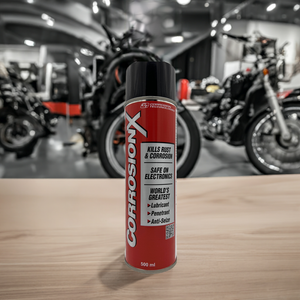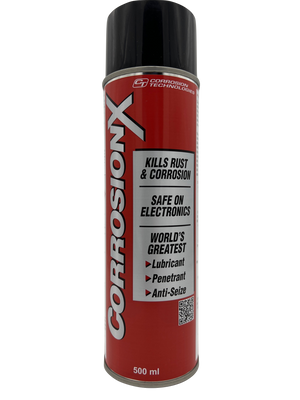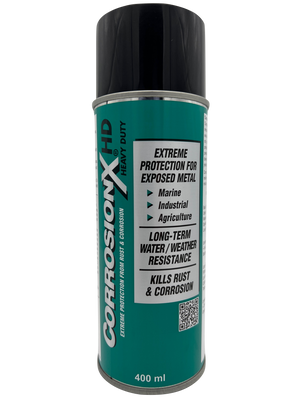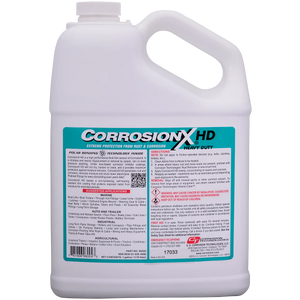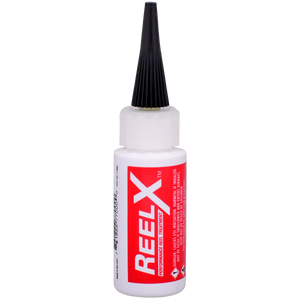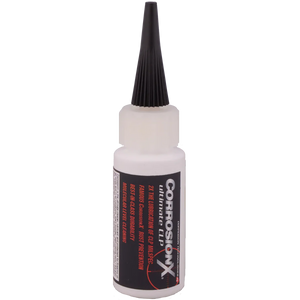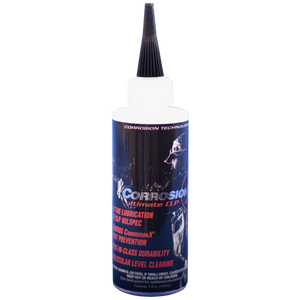Unique Demands of Law Enforcement Firearms
When you think of law enforcement, you probably picture uniformed officers, detectives, or tactical teams wielding a variety of firearms—from compact 9mm pistols for everyday carry to specialized rifles for high-risk operations. One thing these weapons have in common is that they’re expected to perform flawlessly in the most unpredictable conditions.
Constant Availability and Readiness
Unlike a firearm owned by a civilian hobbyist, a law enforcement weapon doesn’t live in a safe waiting for the next weekend range trip. It’s an everyday companion, strapped to an officer’s duty belt, stowed in the cruiser, or kept close at a crime scene. This constant availability demands a firearm that can cycle reliably at a moment’s notice. Whether an officer is responding to a burglary alarm at 3 a.m. or stepping onto a hostage negotiation scene, there’s no luxury of time to fiddle with a stuck slide or a corroded bolt.
Extended Duty Hours
Law enforcement shifts can stretch well beyond eight hours. An officer might start a day shift expecting a routine patrol but end up working a double or being called out for emergencies. The firearm remains exposed to changing temperatures, varying levels of humidity, and possibly even physical knocks or drops during an arrest. A standard gun oil that works fine for recreational shooters might struggle in the face of such prolonged exposure and stress. Only high-grade lubricants designed for tough conditions can keep those weapons in fighting shape.
Stringent Departmental Standards
Most police departments have strict guidelines for weapon maintenance—some go so far as to specify the type of gun oil approved for use. This isn’t bureaucracy for bureaucracy’s sake; it’s about uniformity, safety, and ensuring every officer’s firearm has a consistent performance profile. These regulations often require gun oils that pass multiple performance benchmarks, including tests for corrosion resistance, viscosity stability at various temperatures, and minimal residue build-up.
High-Risk Situations and Life-Saving Interventions
It’s not an overstatement to say that in the law enforcement arena, a reliable firearm can save lives. Consider tactical teams responding to active shooter scenarios. Their weapons might fire numerous rounds in quick succession. High heat, carbon fouling, and friction can all cause mechanical malfunctions if the firearm is not well-oiled and meticulously maintained. In these dynamic engagements, an improperly lubricated bolt carrier or slide can be the difference between incapacitating a threat and risking civilian or officer casualties.
Key Characteristics of a Law Enforcement-Grade Gun Oil
Given these exacting demands, not just any lubricant will do the job. Officers need products that excel in specific categories, addressing issues from extreme weather to sustained firing sessions.
Temperature Resilience
Law enforcement personnel might find themselves in punishing climates, from the blistering sun beating down on a highway to sub-zero nights in mountainous regions. A gun oil that turns sluggish or thick in cold weather can make a firearm slow to cycle, while an oil that burns off in high heat could leave critical components unprotected. Top-tier products in this category are formulated to remain stable across a wide temperature spectrum, ensuring your sidearm will be ready whether you’re shivering at an accident scene at dawn or sweating under the midday sun during a foot chase.
Anti-Fouling Properties
Every time you pull the trigger, carbon, unburnt powder, and microscopic metal fragments enter your firearm’s action. Over multiple shots or extended duty, these residues can accumulate, impacting both performance and reliability. In extreme cases, fouling can cause a jam or misfeed, outcomes that no officer wants in a critical confrontation. High-grade gun oils often contain additives that help repel carbon particles or prevent them from adhering too strongly to metal surfaces. This makes subsequent cleaning easier and reduces the risk of operational failure due to debris build-up.
Corrosion Inhibition
Patrols in rainy environments, marine units operating near saltwater, or even routine contact with perspiration can all accelerate the corrosion process. Rust isn’t just an aesthetic problem; it weakens metal over time, causes pitting, and hampers the mechanical fit of moving parts. Many advanced gun oils incorporate corrosion inhibitors that form a protective barrier on the metal. This protective layer actively wards off moisture and oxidative elements, ensuring that an officer’s firearm remains rust-free and reliable even after months of exposure to challenging conditions.
Low Residue and Non-Toxic Formulations
Law enforcement firearms are not always handled by a single individual. They might pass through the armory for routine checks or be reassigned during shift changes. Nobody wants a weapon coated in a greasy or toxic substance that makes handling unsafe or unpleasant. Modern law enforcement-grade lubricants often strive for minimal residue, meaning they evaporate or dry into a thin film that doesn’t attract dust or produce an oily mess. Additionally, some manufacturers pride themselves on non-toxic formulations, which is a plus for officer health, especially if you’re routinely exposed to these substances during training or cleaning sessions.
Sheer Stability for Sustained Fire
During high-risk operations, SWAT teams or specialized units might unleash a flurry of rounds in a short span. The friction and heat generated can be intense, testing the film strength of any lubricant. Sheer stability ensures the oil won’t break down under stress, maintaining a consistent lubricating layer even as temperatures spike and mechanical parts move at rapid speed. This stability is crucial not just for reliability but also for helping maintain accuracy, as it ensures consistent cycling and recoil behavior across multiple rounds.
The Link Between Service Demands and Maintenance Protocols
Even the best gun oil is only as good as the maintenance routine that accompanies it. In law enforcement contexts, where firearms are essential daily tools, protocols tend to be more rigorous than what you’d see among casual owners.
Departmental Armorers and Inspections
Many police departments employ full-time or part-time armorers. Their job is to ensure that every firearm in service meets the department’s standards. They’ll routinely inspect weapons for signs of wear, corrosion, and improper lubrication. Often, they’ll use standardized checklists that include verifying the presence of adequate oil in friction points like the slide rails, bolt carriers, and sear assemblies. Any deficiencies are flagged, and the officer is notified to correct the issue.
This system acts as a fail-safe. Even if an officer gets busy or forgets a routine cleaning, the armorer’s inspection can catch minor issues before they balloon into a critical malfunction. Armorers can also provide real-time feedback on how certain gun oils perform in the department’s arsenal, influencing future purchasing decisions.
Frequency of Firearms Training
Law enforcement officers typically train far more often than civilian gun owners. Ongoing practice keeps marksmanship sharp and tactical skills polished, but it also places additional stress on the weapons themselves. Frequent live-fire training means more carbon buildup, higher operational heat, and an overall increase in wear and tear. To mitigate these effects, officers need to maintain a more aggressive cleaning and lubrication schedule. This ensures that each training session doesn’t chip away at the firearm’s reliability.
Accountability in Evidence Collection
Another unique aspect of law enforcement is the need for firearms to sometimes go directly from a use-of-force incident into an evidence lockup. If an officer discharges their weapon, it may be collected for forensic analysis. The presence (or absence) of certain chemical residues might become part of an investigation. Consequently, some departments prefer gun oils that have minimal interference with forensic procedures—meaning these lubricants either don’t obscure ballistic evidence or won’t introduce contaminants that complicate lab work. Officers must be mindful of this dynamic and adhere to departmental guidelines that specify which products are acceptable to use.
Overcoming Environmental Challenges
Law enforcement officers don’t always get the luxury of choosing their working environment. One day they could be patrolling a bustling city neighborhood filled with vehicle emissions and industrial pollutants; the next, they might be dispatched for a search-and-rescue in damp woodland terrain. Adapting your lubrication strategy to these variables can be a game-changer in weapon reliability.
Extreme Cold
In colder regions, such as northern states in the U.S. or Nordic countries in Europe, weapons can face sub-zero temperatures for months on end. A thick, high-viscosity lubricant can congeal in frigid air, making the firearm’s cycling sluggish or even rendering the slide immovable. Officers need to choose products specifically formulated to handle freezing temperatures. These typically have lower viscosity at cold extremes, enabling smoother operation. It’s also advisable to keep firearms in temperature-regulated storage or on your person, using body heat to help keep the internal parts from freezing up entirely.
High Heat and Desert Conditions
In scorching desert climates, the sun’s relentless heat can cause oil to evaporate more rapidly, leaving behind sticky residues or, worse, no lubrication at all. The dust and sand so prevalent in desert areas further complicate matters. A standard oil might attract and hold onto those fine particles, turning your gun’s internals into a grinding mess. Specialized desert-grade lubricants have a unique consistency that repels dust while retaining a stable film under intense heat. Additionally, a frequent quick-clean with a soft brush to remove sand before it mixes with the lubricant can make a world of difference.
High Humidity and Maritime Patrols
For officers patrolling coastal towns or working in marine units, salt is an ever-present threat. Salt accelerates corrosion, potentially eating away at unprotected steel in a matter of weeks. The ideal solution is a gun oil that excels at corrosion inhibition. Many advanced formulations create a microscopic film that shields metal from salt and moisture. Still, vigilance is key—regular wipe-downs and inspections are essential to make sure no brine or salt residue remains on the firearm after a day on patrol.
Urban Environments and Industrial Pollutants
Officers working in heavily industrialized or polluted cities may encounter airborne chemicals, acidic rain, or other environmental hazards that can degrade standard lubricants. Over time, these pollutants can form corrosive byproducts on a gun’s surface. Opting for a robust oil that includes pH stabilizers and corrosion inhibitors becomes extremely beneficial in these situations. Even day-to-day smog can deposit micro particulates onto a firearm’s surface, which is why consistent cleaning and re-lubrication should be a weekly routine in such environments.
Best Practices: Application and Routine Maintenance
Selecting the right gun oil is only half the battle. The other half involves how you apply and maintain that oil in your weapon over time. Here’s where law enforcement training and discipline shine through, as officers often follow strict guidelines.
Stripping and Cleaning After Each Range Session
While some firearm owners might get away with infrequent cleaning, law enforcement typically has no such luxury. After every serious range session, the weapon should be stripped to a level permitted by department protocols (some departments restrict how far officers can disassemble certain firearms, leaving detailed tasks to armorers). Each component—barrel, slide, frame, bolt, etc.—should be thoroughly cleaned with a solvent that breaks down carbon and powder residues. Once wiped dry, new oil is applied carefully to friction points, ensuring not to over-lubricate.
Avoiding Over-Lubrication
It’s tempting to bathe your firearm in oil if you think it’ll run smoother. The reality is that excessive oil can pool in critical areas, attracting debris and eventually forming a sludge that may impede mechanical function. In extreme cold, excess oil can freeze into a gummy layer. Plus, in a high-heat scenario, the superfluous oil may burn off, leaving behind charred deposits. The best approach is a thin, even film, focusing on known contact surfaces—rails, hinges, sears, bolt carriers—rather than soaking the entire firearm.
Regular Inspections for Wear and Tear
Even top-of-the-line lubricants can’t completely eliminate wear. High-pressure rounds, repeated recoil, and mechanical friction will gradually degrade certain parts. This is why scheduled inspections, whether done personally or by an armorer, are so valuable. Look for shiny spots on the metal (indicating worn finishes), burrs or scratches on moving parts, and any discoloration that could signal corrosion. If you notice an unusual amount of wear, it might indicate that your current oil isn’t providing enough lubrication or that the part has reached the end of its service life.
Storage Considerations
Most law enforcement officers store their weapons either in a departmental armory or in a secure locker at home. Even in these controlled environments, humidity and temperature shifts can pose risks. It’s wise to keep a small dehumidifier in your locker or gun safe if possible, especially in areas prone to dampness. A firearm that’s thoroughly cleaned and lightly oiled before long-term storage stands a better chance of emerging rust-free weeks or even months down the line.
Checking for Reliability in the Field: Real Stories
Nothing cements the importance of proper lubrication and maintenance like real-life accounts from the field. For law enforcement, the spectrum of experiences ranges from routine encounters to tense, life-altering situations.
The Rapid Response Team in a Summer Heatwave
A SWAT team in a Southern state once had to handle a complex hostage situation in the middle of a brutal heatwave. They spent hours staged in direct sunlight, weapons loaded and at the ready, while negotiators tried to defuse the standoff. The team leader later reported how relief washed over them realizing their rifles and sidearms continued functioning despite being subjected to scorching metal surfaces. Their secret? They used a high-temperature resistant gun oil recommended by their department armorer. The rifles cycled cleanly through several test shots, proving that stable lubrication mattered far more than they’d realized in normal conditions.
The Long Night Shift in the Pouring Rain
In another scenario, a night patrol officer found himself responding to a call in relentless rain. Over the course of eight hours, he and his firearm were drenched, with no chance to dry off. Upon returning to the station at the end of his shift, he discovered only minimal water residue on critical components. The specialized corrosion-resistant gun oil he had applied prevented water from clinging to the metal, making the end-of-shift cleaning quick and easy. Had he used a lower-quality product, the day might have ended with a corroded sidearm and a potential reliability risk for his next patrol.
Arctic-Like Patrols and Frozen Slides
Officers in far northern regions of Europe or Alaska tell tales of firearms refusing to cycle when the mercury dips below freezing. One officer recounted how a colleague’s standard-issue sidearm effectively jammed during a test in extreme cold because the department’s older oil turned into a near-solid. After a departmental review, they switched to a specialized low-viscosity lubricant that remained fluid down to minus 40 degrees. The difference was night and day, literally saving them from potential operational failures in real calls.
Why Quality Gun Oil Matters for Officer Safety
While reliability is the immediate concern, the choice of gun oil can have broader implications for officer safety and community trust.
Confidence Under Pressure
When an officer draws their weapon, it’s rarely under calm circumstances. The stress, adrenaline, and split-second decision-making can be overwhelming. An officer who trusts their firearm to work flawlessly can focus better on situational awareness and threat assessment. This confidence often leads to better outcomes—fewer misfires, more accurate shots, and quicker resolutions to dangerous confrontations.
Minimizing Collateral Risks
In law enforcement, accountability is everything. A malfunction could cause stray rounds or delayed responses. Either scenario could jeopardize bystanders, fellow officers, or the suspect themselves. Quality lubrication that reduces the risk of jams is one part of a larger safety net. Well-maintained firearms, combined with officer training, help ensure that any force used is controlled, precise, and necessary.
Protecting Departmental Budgets
From an administrative perspective, repeatedly repairing or replacing firearms due to poor maintenance can eat into a department’s budget. Those funds could otherwise go to community outreach, advanced training, or new equipment. By investing in higher-grade oils and adopting strict maintenance policies, departments can extend the lifespan of their firearms and avoid unexpected repair costs. This, in turn, fosters better resource allocation that can directly benefit public safety initiatives.
Upholding Professional Standards
Law enforcement agencies are often scrutinized for the way they manage their equipment and personnel. A weapon that fails during a critical incident could raise questions about the department’s competency, readiness, and commitment to officer and community welfare. Conversely, a consistent record of reliable firearms performance strengthens public trust. In many ways, proper firearm care—down to the choice of gun oil—is a reflection of the department’s overall professionalism.
Where to Find CorrosionX in Finland
In Finland, law enforcement officers and civilian firearm owners alike can access a range of high-quality maintenance products. Among these, CorrosionX stands out for its specialized formulations that excel in corrosion prevention and reliability under harsh conditions. If you’re looking to obtain CorrosionX products in Finland, you can find them through Tallitkuntoon, a trusted supplier that focuses on quality solutions for weapon maintenance. Visit www.tallitkuntoon.fi to explore their selection. Having a reliable distributor ensures you can consistently stock up on the lubricants your department or personal collection demands, all without compromising on performance standards.
Conclusion
For law enforcement officers, a firearm isn’t just a tool—it’s an integral part of the job, a critical element of public safety, and sometimes, a literal lifesaver. The extreme unpredictability of police work calls for gear that’s both versatile and robust. In the world of firearms, proper lubrication sits at the intersection of reliability, safety, and peace of mind.
A well-chosen gun oil stabilizes operation across punishing climates, repels corrosive elements like salt and humidity, and mitigates debris accumulation during rapid-fire engagements or rigorous training. Law enforcement firearms endure repeated stress: they’re exposed to the elements, carried for extended hours, and often fired far more frequently than civilian weapons. This unrelenting use magnifies the importance of lubrication that won’t gum up, evaporate, or transform into a magnet for dirt.
But even the finest lubricant can’t rectify a neglectful maintenance schedule. Rigorous and methodical upkeep—frequent cleaning, controlled application of oil, and regular part inspections—are essential for achieving the optimal performance every officer expects and deserves. Departmental armorers play a key role in standardizing these practices, ensuring that each weapon in the fleet meets the same reliability benchmarks.
At the end of the day, gun oil is more than just a slick liquid. It’s a tactical ally, quietly working behind the scenes to preserve mechanical harmony and maintain a predictable, smooth operation when it matters most. For law enforcement officers who daily shoulder the duty of protecting communities, a trustworthy firearm is invaluable. By investing in high-grade gun oils and adhering to strict maintenance protocols, you’re not just prolonging the life of your weapon—you’re reinforcing the safety net that keeps both officers and civilians safer in a world where seconds and reliability can mean everything.


